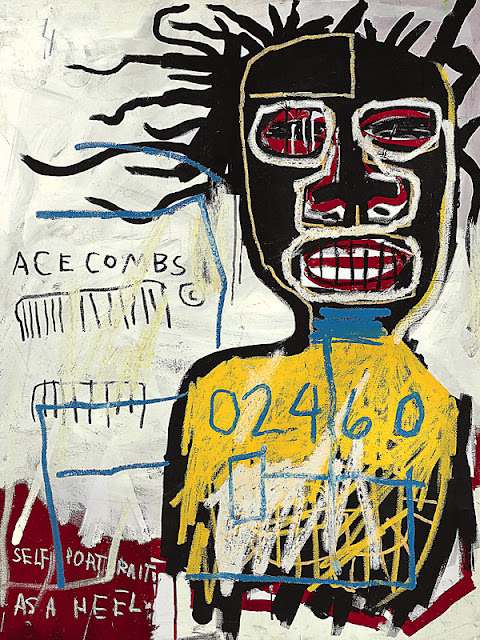Taken as a whole, Boom For Real is an attempt to contextualize Jean-Michel Basquiat by shining a light on his early teenage years, when he was learning to be the artist he would become. Filmmaker Sara Driver brings together the familiar documentary materials to create a portrait of Basquiat that may seem simple, but is as nuanced and meaningful as his works themselves are.
Eschewing a traditional biographic style, Boom For Real devotes a good portion of its early run time to establishing the era, times and cultural climate that Basquiat was living in while he honed his skills. This was New York in the mid- to late-70's; the same cultural shifts that gave rise to hip-hop, American punk & new wave, and graffiti writing. What I'm saying is there's a lot of ground, culturally, for Driver to cover just to establish her setting.
When Basquiat fully takes the doc's focus, he's depicted as an intelligent, talented and opportunistically driven young man, which is somewhat different from the way he's portrayed in probably the most familiar pop-cultural Basquiat touchstone: Julian Schnabel's 1996 biopic Basquiat. In Basquiat, Jeffrey Wright portrays him with an aloofness that, combined with the film's narrative, implies that Jean-Michel was largely unconcerned with fame on any level save, possibly, as an intellectual curiosity. Neither one is inherently "better" than the other, and which one is "more accurate" is debatable as well, I'm sure. I just find the differences interesting.
Obviously I can only speak for myself, but by focusing solely on Basquiat's early (specifically early-teenage) years, I was hoping we might learn more about his influences. Well, we do and we don't. We're told about the origins of his (originally shared, later solo) SAMO persona, and where he was first introduced to some of the jazz records that he would reference, visually, later on. Basquiat, famously, was a sponge for stimuli, drawing inspiration from everything he absorbed regardless of source. Movies, TV, casual conversation, almost anything was likely to find its way into his work.
As much as New York circa the late 70's is used to give context to Jean-Michel's work, the latter part of the doc seems to be using him to contextualize the New York art scene at that moment. Though New York had long been a cultural center for the art world, many of the young, disenfranchised New York artists felt that what was being exhibited didn't say anything that they could identify with, and to them a New York art gallery should speak to New York artists. The desire for representation is a powerful motivator that Basquiat would tap into for much of his sadly truncated career. "Basquiat was a filter" Jim Jarmusch says near the end of the film; one that took in his constant stream of influences, the atmosphere of the times and that demand to be counted and synthesized them all into works charged with urgency, humor and emotion.
Boom For Real is most interesting in that it manages to add dimension to the man Basquiat was by adding dimension to his world. The movie's title, apocryphally something he overheard related to a car accident, is a phrase that found its way into his compositions a few times, and though it's never directly addressed in the doc, I think it makes for an apt comparison to Basquiat's artistic career: brief, impactful and most definitely real.
_________________________________________________________
Originally written for the truly excellent site, XXXXXMOVIEJAWNXXXX.
This is my original piece before being updated and edited,
plus a few pictures for added pizzazz.
_________________________________________________________




No comments:
Post a Comment